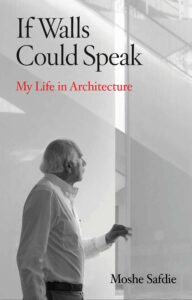
Bursting with grandeur and humanity (“megascale” architectural projects spanning five continents over fifty-fifty years): This is one of the most inspirational books I’ve ever read.
It’s also one of the most soulful – “regardless of what one thinks of the word ‘soul’” – writes architectural genius and visionary Moshe Safdie, 84, in his monumental memoir If Walls Could Speak: My Life in Architecture. One takeaway is his asking us: When did we stop dreaming “big”?
“Unable to design in a manner that considers the benefit of the few at the expense of many,” Safdie, in essence, is asking why we always talk about what’s wrong? Why not talk about ideas to make things right, to improve the “quality” of lives? In his case, around the world. The purpose of his life’s work.
A handsome book, suffused with black-and-white sketches and illustrations of structures envisioned and realized, as well as colorful photographs, treats us to an abundance of eye-popping, fantastically complex architectural visions, projects, and stories of how they came about. A “melting-pot” mindset aimed at advancing an “exemplary public realm” in different cities, cultures, and countries on most continents on the planet.
So why isn’t his name on the tip of all our tongues? A mystery in a book intended to demystify the “mysterious” profession of architecture. “There is mystery at the heart of architecture just as there is mystery in the meaning of life,” Safdie lyrically writes. Considering architecture is “a mission, and an architect has a responsibility (to clients, to society) that transcends the self,” there will always be a mystique about creativity and spirituality.
Safdie is an ideal messenger for infusing a sense of soulfulness, spirituality in every socially-minded project he takes on.
Grounded in Israeli values of society above self, he was born in Haifa, Israel when it was governed by the British Mandate for Palestine and when Israel became an independent nation in 1948, “an extraordinary experience.” Even as a boy he “loved domes. There is a spiritual element, I am sure – circularity symbolizes unity.” In chapters titled “Old City, New City,” “Faith and Peace,” “Does God Live There,” and throughout his life’s story, Safdie has sought to “create places of spiritual uplift.” None more profound than designing the Children’s and Transport Memorials on the Yad Vashem Memorial Site (and the Yad Vashem History Museum he redesigned) in Jerusalem to honor the estimated one-and-half to two million children who perished during the Holocaust. (His mother-in-law, a Hungarian Jew, survived the Bergen-Belsen Concentration camp.)
Eyeing a “natural rock archway” on the “ridge of the Mount of Remembrance,” his team dug into, under, and across those hills brilliantly “creating a large chamber as a place of reflection.” An underground room in which a candle flickered and twinkled like millions of stars in the heavens symbolizing each of the children who vanished. The Transport Memorial is chilling too, seeing “one of the freight cars that carted people to the death camps” high on a hill.
For drastically different “building art” with a spiritual quality take a look at his Infinity Pool at the Marina Bay Sands hotel resort complex in Singapore:
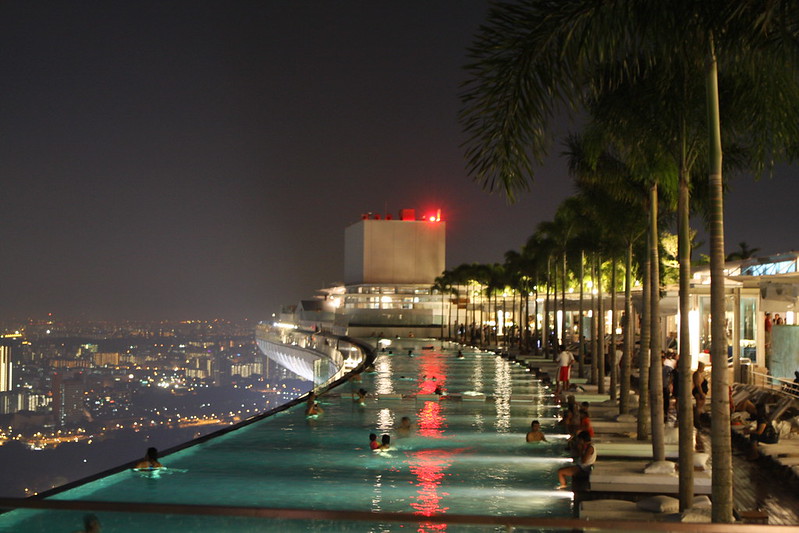
An example of a project yet to come to fruition is in Abu Dhabi expanding the sacred dimension, the Abrahamic Family House. “A complex that would incorporate a mosque, a church, and a synagogue.”
While it would be easy to devote this entire review to Safdie’s mind-boggling, wide-ranging, and “far-reaching” projects described in chapters structured around them, this memoir is SO much more than even that. A few more images below to give you more of a sense of the magnitude, diversity, and uniqueness of the work of Safdie Architects (architecture is a highly collaborative process), to include museums; historical/cultural/religious/peace centers; public/island/Arctic housing complexes; libraries; academic/government properties; and airports.
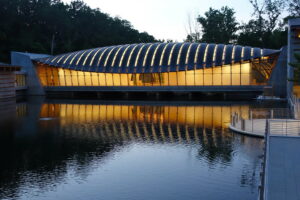

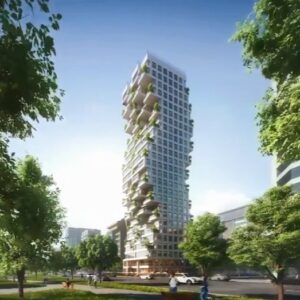
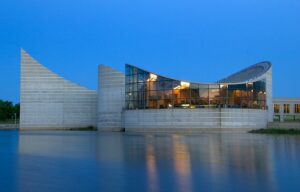

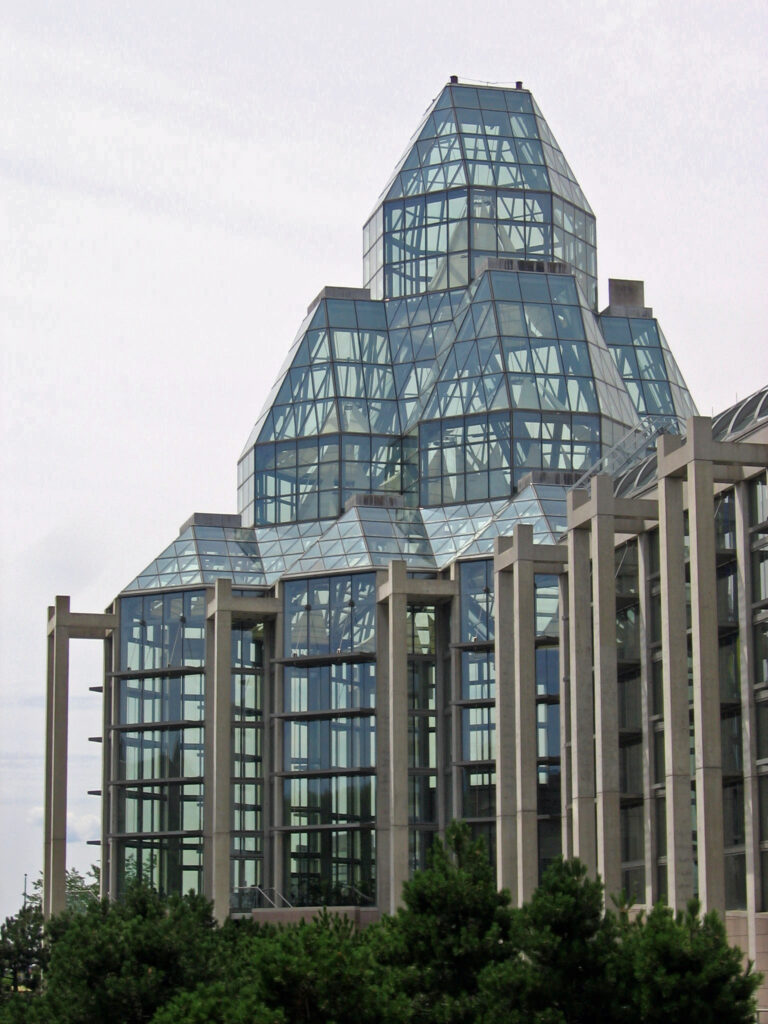
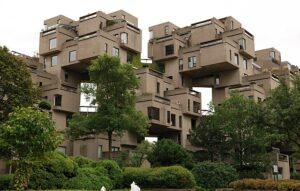
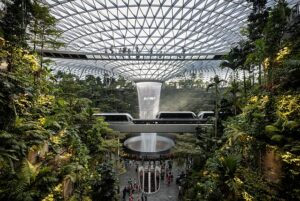
Middle(l-r): The Exploration Place, Wichita; Habitat Qinhuangdao; National Gallery of Canada, Ottawa
Bottom (l-r): Habitat 67, Montreal; Jewel Changi Airport, Singapore
From here, it’s imperative to reflect more on the man and his architectural philosophy and values.
In 1953, Safdie’s family left Israel for Montreal, Canada when conflicts between Arabs and Israelis intensified. He’s also a US citizen, living near Harvard where he teaches at their Graduate School of Design and Safdie Architects is based (offices in Israel and Canada too). Having lived in different cultures on different continents, and studied and traveled to a slew of other nations, his life is as rich and extraordinary as his groundbreaking work. He’s met, worked with, and befriended people from many walks of life – famous architects, presidents, prime ministers, royalty, diplomats, artists, writers, journalists, corporate leaders, developers, composers, and musicians. The story of Yo-Yo-Ma playing his cello in Safdie’s redesigned (within limits) 1753 historic home in Cambridge, Massachusetts is one of many joys he expresses. (He seems almost amazed himself at how opening higher-to-the-sky glass windows in his living room created even more “dynamism” than the space already had.) Another relationship, with Yitzhak and Leah Rabin, is movingly described.
Actually, everything in this book moves us in one way or another.
Safdie says architecture “thinks in three dimensions,” mixing math, engineering, and spatial skills with aesthetic, artistic ones. Yet, he also says, “Every aspect of knowledge and life – the sciences, the social sciences, the humanities – can come into play in the course of creating a building.” It’s these higher-purpose dimensions that touch us deeply about a man who comes across as feeling things deeply. These we might call socially conscious, environmental, philosophical, and spiritual dimensions.
When Safdie describes himself as a “modernist architect” as opposed to a postmodernist, a trend he bucked for a “permissiveness” that led to structures that lacked meaning, he embraces these added dimensions. How to explain how uplifting to be introduced to a man who sticks to his principles and values time and time again? You see this in the way he approaches opportunities for all his projects, even in countries like China, Iran, and the Philippines where he questions whether he should “work for any regime with whose governance” goes against his democratic values? If he sees “ordinary people” can gain something he proceeds.
For instance, a project in China on a site called Emperor’s Landing, “a quintessential megaproject” on the scale of lower Manhattan, allowed an opportunity to break ground in a country closed off to most. It’s also a striking example of what Safdie refers to as “multi-use” projects within an urban design.
Safdie’s fame kicked off with Habitat ’67 in Montreal timed to their Expo. A stark contrast to “soul crushing” public housing projects that “devastated” him, believing this is not “how people want to live.” (Other Habitat housing complexes have been built and are in the works.)
“Architecture is labor-intensive and time-intensive.” Passion-intensive, long-term planning intensive, and humbling-intensive too, because you can work on a project for years, believe in it wholeheartedly, invest significant funds in, and then for a variety of reasons it’s postponed or abandoned, such as a war, financial crisis, and “geopolitics.”
Forty years ago Safdie wrote a beautiful poem that tells you a lot about his character, humility, and humanity. The lines relate to seeking truths: “He who seeks truth shall find beauty; and “through nature, the nature of the universe and the nature of the man, we shall seek truth.”
“Nature’s way” is also a defining element, connecting the “sheltered world indoors” with the “natural world outdoors.” There’s always a “garden or a courtyard,” water if possible – a fountain, waterfall, pool. The “sound of moving water” at the Ben Gurion International Airport, “performs a kind of magic for the soul” (see https://www.aiq.co.il/su_article.php?id=59&num=251&lang=eng).
In his most visionary chapter “What If?” we’re implored to “dream big.” With our imaginations stirred, we think If Only.
Lorraine